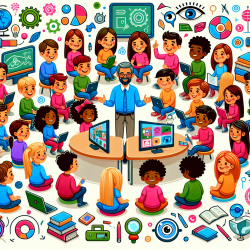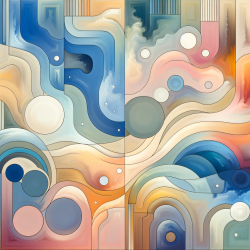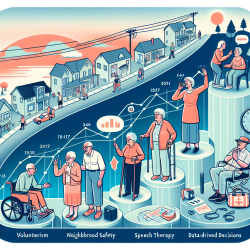Introduction
In the realm of special education, continuous improvement and adaptation are essential for practitioners aiming to provide the best support for students with diverse needs. The recent research on "Measurement of exclusive Υ photoproduction from protons in pPb collisions" offers valuable insights that can enhance practitioner skills. This blog post will explore how the findings from this study can be implemented in special education practices, encouraging further research and development in the field.
Understanding the Research
The study focuses on the exclusive photoproduction of Υ mesons from protons in proton-lead (pPb) collisions at a center-of-mass energy of 5.02 TeV. This research, conducted using the CMS experiment at CERN, provides a deeper understanding of the interactions at a subatomic level. The findings reveal intricate details about the gluon distribution in protons, which is crucial for understanding the fundamental forces in particle physics.
Implications for Special Education
While the direct application of particle physics research to special education might not be immediately apparent, the methodologies and analytical skills developed through such studies can significantly benefit educational practitioners. Here are some ways in which these insights can be translated into the field of special education:
- Data-Driven Decision Making: Just as researchers use data to draw conclusions about particle interactions, special education practitioners can employ data-driven approaches to assess and improve student outcomes. By analyzing student performance data, educators can tailor interventions to meet individual needs effectively.
- Innovative Problem-Solving: The complex problem-solving skills required in particle physics research can inspire educators to develop innovative solutions to challenges in special education. This could involve creating new teaching strategies or adapting existing ones to better support students with disabilities.
- Collaboration and Networking: The collaborative nature of large-scale research projects like those at CERN highlights the importance of networking and teamwork. Special education practitioners can benefit from building strong professional networks, attending conferences, and participating in webinars to share knowledge and best practices.
Encouraging Further Research
The study on exclusive photoproduction encourages practitioners to engage in further research within their field. By staying informed about the latest developments in both education and related disciplines, educators can continue to refine their practices and contribute to the advancement of special education. Engaging in research not only enhances personal knowledge but also fosters a culture of continuous improvement and innovation within educational institutions.
Conclusion
The insights gained from the research on exclusive photoproduction provide valuable lessons for special education practitioners. By adopting data-driven approaches, fostering innovative problem-solving, and embracing collaboration, educators can enhance their skills and improve outcomes for students with special needs. As we continue to explore the intersections between different fields of study, we open new avenues for growth and development in special education.
To read the original research paper, please follow this link: Measurement of exclusive Υ photoproduction from protons in pPb collisions.










